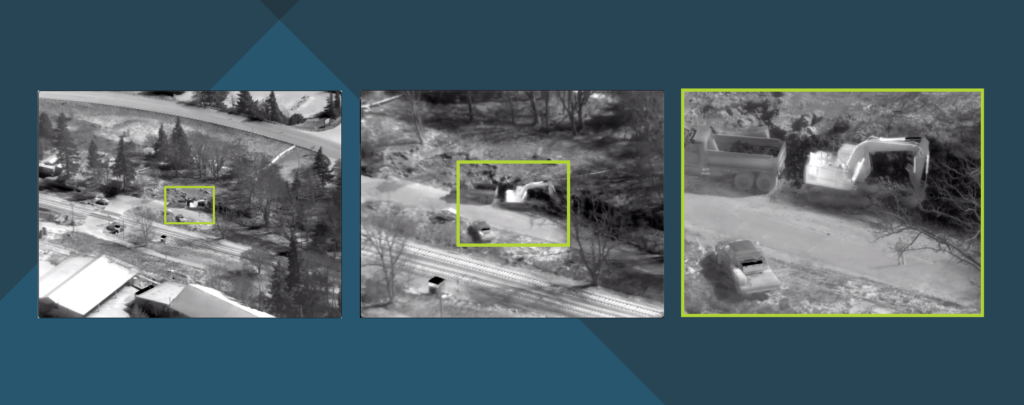
Traditional surveillance and monitoring solutions provide limited coverage, especially at night and in poor weather conditions. Mid-wave infrared (MWIR) cameras use thermal imaging, providing long-range imaging in all weather and light conditions.
Recent technological advances mean that MWIR cameras are now widely accessible for a number of applications–everything from perimeter surveillance to laboratory research. Here at Sierra-Olympia Technologies we supply a range of MWIR cameras and components that offer compact size and unrivaled performance.
Learn more about Sierra-Olympia’s MWIR product line
THE FUTURE OF SURVEILLANCE
Crime, terrorism, cross-border dangers, and increased awareness of potential threats mean that security, monitoring, and surveillance are more important than ever before. Traditionally, closed-circuit television (CCTV) cameras have been used for perimeter surveillance and security imaging. However, such cameras rely on detecting visible light, so their applications are limited at night or in other low-light conditions. Range is another disadvantage. A single CCTV camera can typically only cover distances of 10 to 12 meters (35 to 40 feet), meaning that dozens are often necessary to provide the desired level of area coverage.
Thankfully there is now a solution: mid-wave infrared (MWIR) thermal imaging cameras. Not only can MWIR cameras operate in complete darkness , but they also have a range of up to 30 kilometers (≈18.5 miles), offering an advanced alternative to CCTV for round-the-clock surveillance. MWIR cameras have the added advantage of being able to perceive imagery that is not usually visible to the human eye, such as gas leaks and covered or obscured objects.
Land, Sea, and Air Applications
Thermal imaging cameras have been widely used in military applications for some time, but until recently high costs have prohibited their further application. However, technological advances have resulted in thermal imaging systems that are less expensive, more compact, and more reliable than their predecessors.
Thermal imaging systems are now utilized in land, marine and airborne monitoring in applications including perimeter patrol, search and rescue, police searches, wildlife research, fault detection, leak detection, mine detection, and firefighting.
How Does Thermal Infrared Imaging Work?
Passive thermal imaging cameras, also known as forward-looking infrared (FLIR) cameras, detect infrared radiation directly from objects such as people or vehicles, with no external illumination required.
The electronic images produced correspond to thermal gradients in the observed scene. The infrared light detected by passive thermal imaging cameras falls into two ranges: long-wave infrared (LWIR, 8 micron to 12 micron) and mid-wave infrared (MWIR, 3 micron to 5 micron).
mwir vs. lwir imaging
LWIR and MWIR cameras each have their advantages and disadvantages and which camera you should choose depends on the demands of your specific application. Mid-wave infrared cameras excel at long-range surveillance applications. The use of MWIR cameras has revolutionized airport perimeter security, vessel traffic monitoring, and critical infrastructure protection.
MWIR cameras are also less susceptible to atmospheric conditions. To be detected by passive infrared cameras, infrared radiation must travel through the atmosphere to the detector. The range of LWIR cameras is often limited by absorption, scattering, and refraction of LWIR radiation by water vapor and CO2 in the atmosphere. Because MWIR radiation travels through the atmosphere, it is less affected by absorption and scattering than LWIR.
As a result, MWIR cameras provide the longest detection ranges, seeing about 2.5 times farther than LWIR cameras. Consequently, MWIR cameras can detect humans, vehicles, and objects even if they are many miles away.
While LWIR cameras can be affected by weather and environmental factors, MWIR cameras can operate in a range of climates, including those with high humidity, making them particularly well-suited to marine and coastal environments. Additionally, because they are typically smaller and lighter than LWIR cameras with similar optics, MWIR cameras are the obvious choice in applications with size, weight, and power (SWaP) requirements, such as airborne operations.
Mid-wave cameras provide superior sensitivity and contrast with low sensor noise, resulting in high-quality images. Moreover, MWIR cameras provide exceptional image clarity since thermal contrast is often greater in the MWIR band than in the LWIR band. Finally, the noise equivalent delta temperature (NEDT) for an MWIR camera with long-range optics is typically 30-50 % better than that for an LWIR camera, resulting in sharper images.
For tracking fast moving targets or targets with a wide temperature ranges, MWIR deliver wide dynamic range with short integration times to track and visualize the target more clearly than LWIR. MWIR cameras provide superior sensitivity and flexibility, making them ideal for use both in the field and in the laboratory.

Sierra–Olympia Technologies for Long–Range MWIR
Sierra-Olympia Technologies has been producing advanced infrared imaging components and technologies since 1995. Our client base includes original equipment manufacturer (OEMs), commercial, government, and military customers. Sierra-Olympia supply a range of MWIR camera cores for long-range, continuous, high-performance infrared imaging. Sierra-Olympia MWIR cameras are ideal for a variety of applications from long-range surveillance to laboratory research.
Sierra-Olympia’s new Ventus series (275, 700, 690, and 900) brings together the very latest in detector, cooler and lens design to provide a wide range of camera cores with unmatched sensitivity and unrivaled performance. Ventus cameras produce high quality, easy–to–interpret images, taking advantage of a variety of continuous optical zoom lenses–combined with local area processing functions, electronic image stabilization, de-noise processing, sharpening, and autofocus. The Ventus camera core family offers price and configuration advantages found in no other MWIR camera core.
References and Further Reading
- ‘Airborne Detection of Land Mines Using Mid-Wave Infrared (MWIR) and Laser-illuminated-near Infrared Images with the RXD Hyperspectral Anomaly Detection Method’ Ayhan B, Kwan C, Li X, Trang A, Conference Paper: Fourth International Workshop on Pattern Recognition in Remote Sensing, 2006.
- ‘Marine Fauna Mitigation using Thermal Imaging’
- ‘Perimeter security market driven by threat of increased terrorism’
- ‘MWIR or LWIR thermal cameras for surveillance applications?’While LWIR cameras can be affected by weather and environmental factors, MWIR cameras can operate in a range

